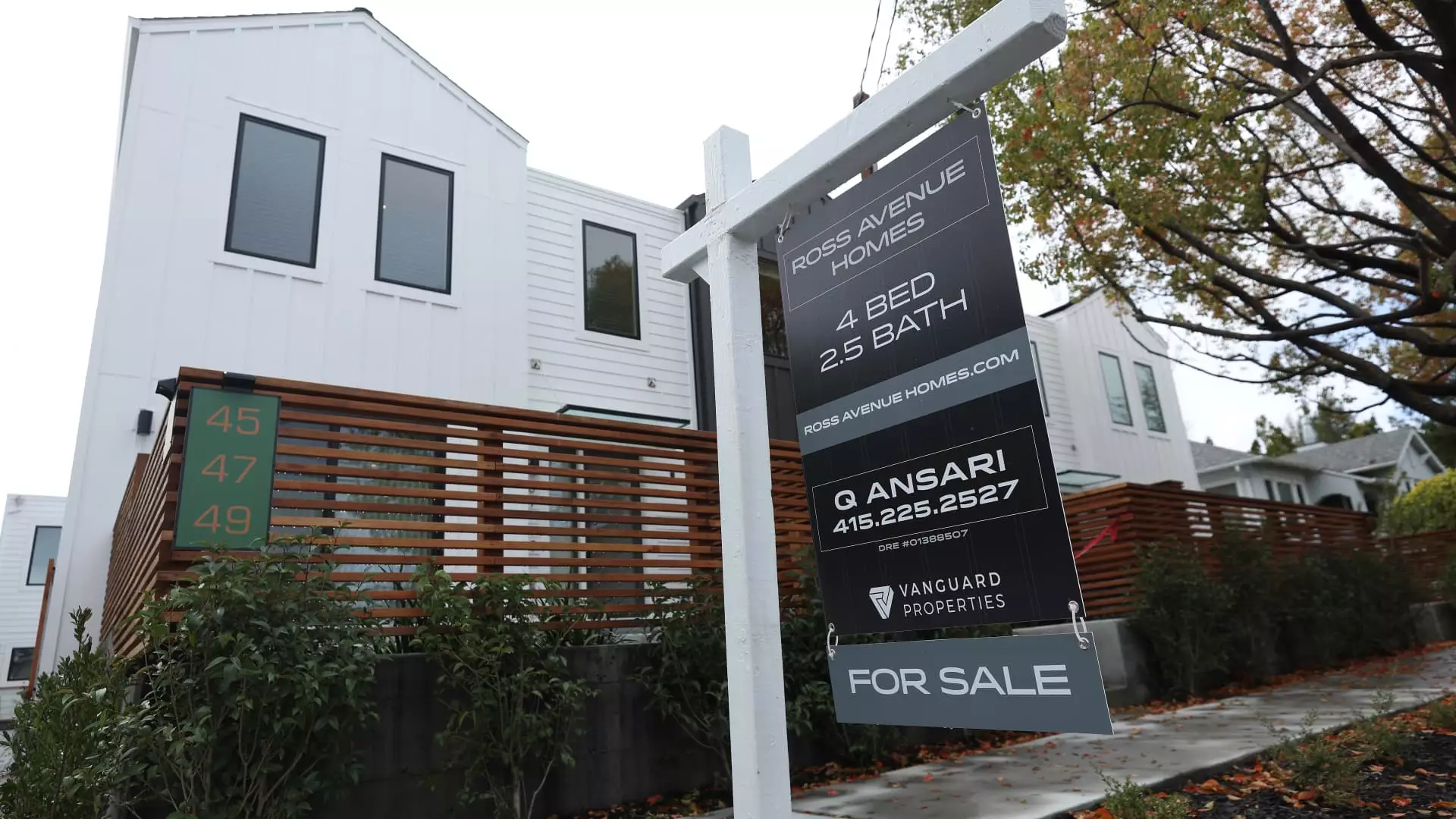The real estate market experienced a setback in July, with sales of previously owned homes dropping by 2.2% compared to June. The National Association of Realtors reported that the annualized rate of sales reached 4.07 million units, reflecting a significant decline of 16.6% compared to the same period last year. These figures indicate that July witnessed the slowest sales pace since 2010. It is important to note that these statistics represent closings, indicating that contracts were likely signed during May and June when mortgage rates started to climb from around 6.5% to well over 7%. While the West region managed to buck the trend with a 2.7% increase in sales, all other regions experienced a decline. The Northeast region was hit the hardest, seeing a decline of 5.9%.
The National Association of Realtors has attributed the decline in home sales to higher mortgage rates and a persistent supply shortage. At the end of July, there were only 1.11 million homes available for sale, representing a 14.6% decrease compared to the previous year and reaching the lowest level since 1999. The reduced supply has resulted in a highly competitive market, driving both competition and prices higher. With only half the number of homes available for sale compared to pre-pandemic levels, the market currently faces a 3.3-month supply, far below the desired balanced state of a six-month supply.
Supply and Demand Imbalance
The limited supply in the market has pushed prices up in all regions except the West, where they remained flat. The median price of a home sold in July was $406,700, showing a 1.9% increase from the previous year. The chief economist for the National Association of Realtors, Lawrence Yun, highlighted that while the West is the most expensive region, it experienced a slight price decline. This price fluctuation can be attributed to the availability of more supply in the high-end market segment, while the lower end faces scarcity.
Despite the challenges in the market, there is still strong demand for homes. Approximately three-quarters of homes sold were on the market for less than a month, indicating the presence of eager buyers. In fact, around 30% of homes sold for more than their listing price, further emphasizing the competition among buyers. The limited options available to home shoppers have contributed to homeowners choosing to stay put and enjoy their current homes, especially those with low mortgage rates. This behavior has decreased the number of homes hitting the market, exacerbating the supply shortage issue.
Sales fell across all price categories, with the highest price category (homes over $1 million) experiencing the smallest decline. This anomaly can be explained by the greater supply of homes available at the high end of the market. Conversely, the lean inventory at the lower end has made it even more challenging for homebuyers searching for affordable options.
Cash sales continue to play a significant role in the real estate market, with all-cash transactions accounting for 26% of total sales in July. This percentage remained steady compared to June but saw a notable increase from 24% in July 2022. Investors, who typically rely on cash payments, purchased 16% of homes in July. While this figure is slightly lower than June’s 18%, it still marks a notable increase from 14% in July 2022.
First-time homebuyers appear to be gaining momentum in the market, with the National Association of Realtors reporting that 30% of sales went to this buyer category in July. This represents an increase from 27% in June, suggesting that first-time buyers are finding opportunities despite the challenging conditions. Furthermore, there has been a growing demand for Federal Housing Administration (FHA) loans, which offer low down payment options. These loans are particularly favored by first-time buyers, highlighting their increasing presence in the market.
As we approach the fall season, the housing market stands at a pivotal point. Lisa Sturtevant, the chief economist at Bright MLS, ruminated on the potential impact of higher mortgage rates. She noted that the decision between renting and buying may currently lean towards renting for some consumers, especially in markets where rents are decreasing, and new apartments are becoming available. The coming months will reveal whether the market can adjust to the challenges and provide favorable conditions for both buyers and sellers.


Leave a Reply